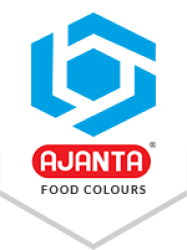_1727083172.jpg)
Synthetic food colours have been used in a wide range of products for a long time. It gives an appealing look to products from beverages to candies, baked goods, and even dairy items which attract consumers and boost product sales and brand recognition. However, there are always some misconceptions about the safety of synthetic food colours. In this article, we will try to debunk some of the common myths surrounding synthetic food colours and highlight their advantages, especially for manufacturers seeking high-quality options.
Myth: Synthetic Food Colours Are Unsafe
One of the most common misconceptions about synthetic food colours is these colours are not safe for human consumption. Although, there is no evidence that clearly shows that. Regulatory bodies that check the quality and safety of colours for human consumption in their countries such as the US Food and Drug Administration (FDA) in the United States, the European Food Safety Authority (EFSA) in the European Union, the Food Safety and Standards Authority of India (FSSAI) in India, the National Health Commission (NHC) in China, and more, considering these colours are safe for human consumption and approves its use in products. These regulatory bodies set strict rules and regulations on the use of synthetic food colours and ensure their safety from time to time by conducting inspections, sampling, testing, and enforcement actions.
Myth: Synthetic Colours Are Inferior to Natural Colours
Another misconception about synthetic food colours is they are of low quality compared to its alternative natural food colours. However, manufacturers often find that synthetic food colours are more effective and versatile, providing vibrant and appealing colours to their products for a long time. This can be harder to achieve these kinds of appealing colours in products from natural food colours. Natural food colours can oxidize which makes products fade and dull at different temperatures or during storage of products, but synthetic food colours on the other hand maintain their vibrance and appearance on products in under various challenging conditions. In the food, cosmetics, and pharmaceutical industry it is crucial for manufacturers to maintain product appearance and product quality throughout its shelf life.
Myth: Synthetic Colours Have No Benefits for Manufacturers
There is a myth that synthetic food colours are not providing any benefit to manufacturers compared to natural colours, but it is only a misconception. Synthetic food colours have various advantages, first and foremost synthetic food colours are a more cost-effective option for manufacturers to achieve vibrant and appealing hues. Natural food colours that are derived from animals, vegetables, plants and algae which require more labor that makes them expensive for manufacturers. On the other hand, synthetic food colours that are prepared in labs in bulk quantities allow manufacturers to control costs without compromising quality. Plus, synthetic food colours allow flexibility in colour preparation that helps manufacturers in making unique coloured products which is beneficial for brand recognition and standing in the competitive market. Whether manufacturers want any red colour shade for a strawberry-flavored drink or a deep green for mint candy, and for any other of their products synthetic colours are a suitable option for them.
Myth: Synthetic Food Colours Are Only for Processed Foods
One more miscunsuption about synthetic food colours is they are only used in highly processed or "junk" foods. However, synthetic food colours are used in a wide range of food products such as health supplements, dairy products, and beverages. Synthetic food colours are also used in some non-food products such as cosmetics and medicines. And because of its ability to provide appealing and vibrant colours to products that attract consumers' attention, it is used in both premium and everyday products.
Myth: Consumers Are Completely Against Synthetic Food Colours
There is a common belief that consumers reject synthetic food coloured products and favor natural food coloured products, but it's also a misconception. Consumers not rejecting synthetic food colours they are only conscious about their health and demanding colours that are safe for consumption, whether they are synthetic or natural. They demand proper labelling on products and want to know what ingrediants are used in their manufacturing including colours. Manufacturers can gain consumer trust and establish their brand recognization by using high-quality synthetic food colours in their products and providing proper details about their products to cunsumers, which ultimately boost the product sales.
Conclusion
There are many misconceptions surrounding synthetic food colours often cloud their real benefits and uses, especially in the manufacturing sector. Manufacturers should uses high-quality synthetic food colours in their products and only trust in scientific evidences not these types of miscunseptions. Manufacturers can source these high-quality colours from reputed colours manufacturer and supplier like Ajanta Food Colours, a global leader in the synthetic food colours manufacturing industry with over 75 years of legacy.
Ajanta uses the latest technologies and machineries in their manufacturing plants to make sure about the quality of its supra range of colourants. The company also received various awards and certificates from Indian governmental bodies and from the country where Ajanta exports its high-quality, FDA-approved colours. Some of the awards and certificates received by Ajanta Food Colours includes the Arch of Europe Award, the Bureau of Indian Standards (BIS) Award, certifications from the Food Safety and Standards Authority of India (FSSAI), the US Food and Drug Administration (US FDA), as well as Halal, Alcumus ISOQAR, Star-K Kosher, Food Safety System 22000 (FSSC 22000), and ISOQAR certifications, and more.
To know more about Ajanta Food Colours and its high-quality colours, or for any other information please contact us today!




